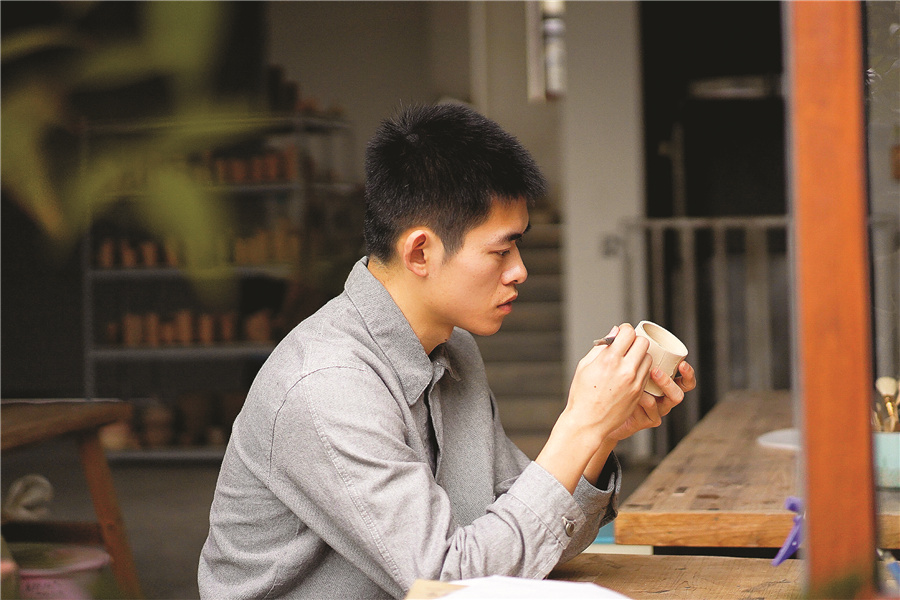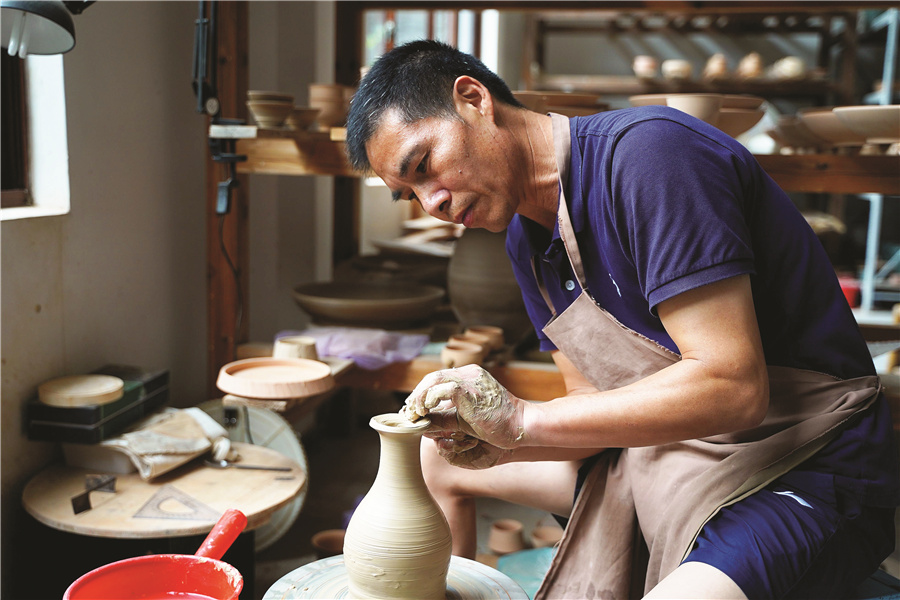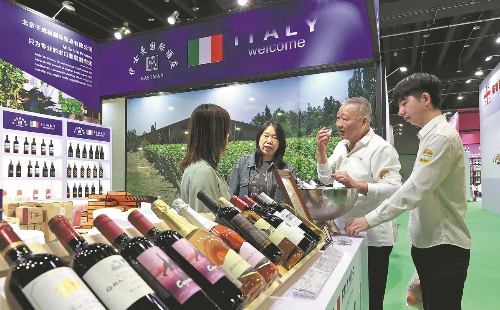Creating tradition with a glaze of modernity

Ye Chenxi's father Ye Xiaochun is a sixth generation inheritor of the Longquan celadon. [Photo provided to China Daily]
During his study in Jingdezhen, Ye developed many innovative celadon works, such as the Forest of Ceramic Language, which tried to express the interweaving of humanity and nature.
Ye put together wood and ceramics and developed them into an English afternoon tea set.
The modest and flexible black walnut and elegant and rigid blue and white ceramic were used as the main materials of the tea set and coexisted in harmony through modern technique.
He didn't go into tedious carving but only highlighted the simple and clear exterior lines, with an aim of sending the breath of nature to the fingertips of the tea set users.
His work won the silver prize at the 11th China Ceramic Art Exhibition in 2018.
Ye went back to Longquan right after he graduated from the Jingdezhen university in 2019.
In most cases, his day runs like clockworks.
He deals with the whole shooting match, including clay molding and firing and glaze concoction.
"It's at least eight-hour work a day that is filled with both beautiful and painful moments," Ye says.
He is alone at work most of the time, and steps are complex and each one calls for intense concentration.
For example, when looking for clay, he needs to find the right type in the vast mountains, and then pulverize, wash and filter them.
All the trouble is worth it once the celadon turns out beautifully after the baptism of fire, about 1,300 C, he says.
However, things are in flux until the last moment.

Ye Chenxi's father Ye Xiaochun is a sixth generation inheritor of the Longquan celadon. [Photo provided to China Daily]
"You might make a great model, but it could collapse during the fire process. If the glaze was too thick or too thin, or impurities from the air got in, they would all leave undesirable marks on the final products," Ye Chenxi says.
He would review the whole process after every failure.
Ye and his family are living in an artist zone in Longquan. He and his father would often sit by the pool and discuss celadon creation and life. They also went to the depths of mountain to search for the right materials from time to time.
"Kilning is the hardest work, but it is very good test for celadon makers," says Ye Xiaochun, who started working at a local ceramic plant at 17 and spent four years in the kilning division.
Although the cracked ice glaze has already been successfully restored, the finished product rates have only stayed at around 30 percent.
Ye Xiaochun says he used to take Ye Chenxi to play in the mountain.
"My purpose was to take him to see the porcelain clay, so that he could have a certain understanding of it since childhood, because pottery itself also depends on our nature," Ye Xiaochun says.
This early influence has got into Ye Chenxi, because he has chosen his life trajectory entirely on his own.
Last year, he used leather and wood on celadon and made a set of items for study rooms, such as pen holders and ink boxes and showed them at a Shanghai exhibition.
"Young people were interested in my things," says Ye Chenxi.
It has encouraged him to make further inroads in celadon product design.
"The goal is to make celadon closer to the public and cheaper," he says.





 play
play